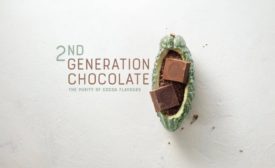Home » Keywords: » sugar reduction
Items Tagged with 'sugar reduction'
ARTICLES
A leader from Icon Foods explains BFY trends and products that can satisfy consumers.
Read More
Sugar reduction, bread excellence, and fruitcakes: SF&WB multimedia highlights
The latest snack, bakery, and candy chats cover a broad range of fascinating topics.
October 3, 2023
ADM: consumers hungry for reduced-sugar snack and bakery products
An expert from the company outlines trends in sweeteners, and how producers can deliver.
July 24, 2023
Beneo unveils new sugar-reduction ingredient solution
Beneo-scL85 is suitable for use in a wide range of snack and bakery foods.
May 30, 2023
Sugar reduction: an elusive sweet spot in baking
An expert from Batory Foods shares common sugar-reduction challenges, and solutions.
February 20, 2023
Batory Foods introduces sweetener-focused business unit
Batory Sweetener Solutions will tackle sugar reduction in snack and bakery items.
January 12, 2023
Barry Callebaut debuts ‘second generation of chocolate’ with a focus on flavor
Company launches dark, milk chocolate with only two or three ingredients.
October 27, 2022
Barry Callebaut focuses on flavor with ‘second generation of chocolate’
Company launches dark, milk chocolate with only two or three ingredients.
October 27, 2022
Stevia life-cycle study marks improved sustainability of Reb M
Reb M is increasingly used as a sweetener in food and beverage formulations.
September 23, 2022
Stevia life-cycle study shows improved sustainability of Reb M
Reb M is increasingly used as a sweetener in food and beverage formulations.
September 22, 2022
Get our new eMagazine delivered to your inbox every month.
Stay in the know on the latest snack and bakery industry trends.
SUBSCRIBE TODAY!Copyright ©2024. All Rights Reserved BNP Media.
Design, CMS, Hosting & Web Development :: ePublishing










